Biomechanical effects of environmental and engineered particles on human airway smooth muscle cells
- PMID: 20356875
- PMCID: PMC2943881
- DOI: 10.1098/rsif.2010.0068.focus
Biomechanical effects of environmental and engineered particles on human airway smooth muscle cells
Abstract
The past decade has seen significant increases in combustion-generated ambient particles, which contain a nanosized fraction (less than 100 nm), and even greater increases have occurred in engineered nanoparticles (NPs) propelled by the booming nanotechnology industry. Although inhalation of these particulates has become a public health concern, human health effects and mechanisms of action for NPs are not well understood. Focusing on the human airway smooth muscle cell, here we show that the cellular mechanical function is altered by particulate exposure in a manner that is dependent upon particle material, size and dose. We used Alamar Blue assay to measure cell viability and optical magnetic twisting cytometry to measure cell stiffness and agonist-induced contractility. The eight particle species fell into four categories, based on their respective effect on cell viability and on mechanical function. Cell viability was impaired and cell contractility was decreased by (i) zinc oxide (40-100 nm and less than 44 microm) and copper(II) oxide (less than 50 nm); cell contractility was decreased by (ii) fluorescent polystyrene spheres (40 nm), increased by (iii) welding fumes and unchanged by (iv) diesel exhaust particles, titanium dioxide (25 nm) and copper(II) oxide (less than 5 microm), although in none of these cases was cell viability impaired. Treatment with hydrogen peroxide up to 500 microM did not alter viability or cell mechanics, suggesting that the particle effects are unlikely to be mediated by particle-generated reactive oxygen species. Our results highlight the susceptibility of cellular mechanical function to particulate exposures and suggest that direct exposure of the airway smooth muscle cells to particulates may initiate or aggravate respiratory diseases.
Figures

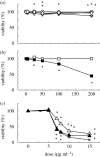
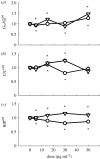
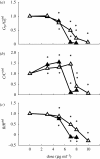
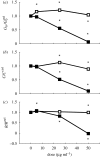
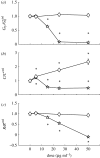
References
-
- Bai T. R. 1990. Abnormalities in airway smooth muscle in fatal asthma. Am. Rev. Respir. Dis. 141, 552–557. - PubMed
MeSH terms
Substances
LinkOut - more resources
Full Text Sources
Miscellaneous

